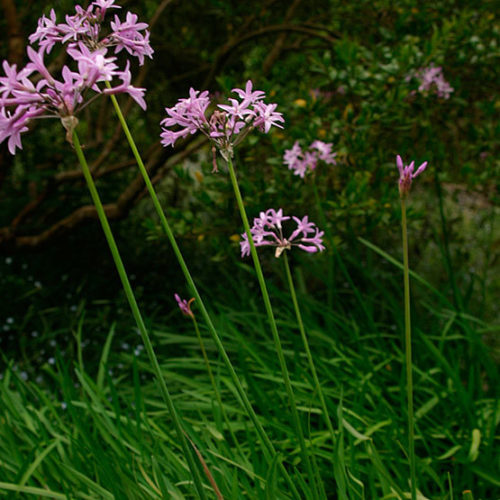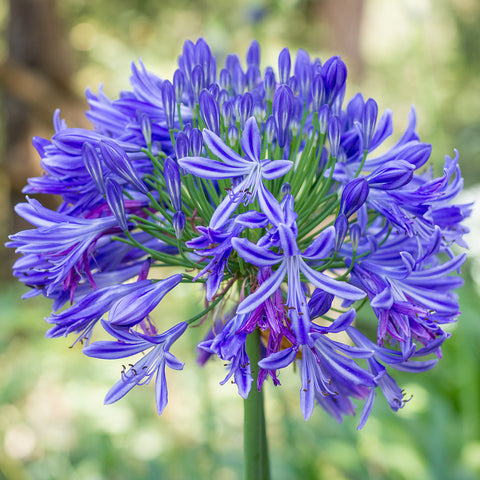Seasonal Agapanthus Care: Getting Ready For Winter and Summertime
Seasonal Agapanthus Care: Getting Ready For Winter and Summertime
Blog Article
Grasping the Art of Agapanthus Care: Essential Steps for Healthy Growth and Dynamic Flowers
In the realm of horticulture, the cultivation of agapanthus stands as a satisfying undertaking for those who seek to nurture these classy flowering plants. With their striking flowers and graceful foliage, agapanthus has actually recorded the focus of gardeners worldwide. Nonetheless, attaining ideal growth and vivid blossoms calls for a nuanced strategy that includes various necessary actions. From choosing the best selection to understanding trimming techniques, the trip towards cultivating prospering agapanthus plants is complex and holds the vital to unlocking the complete potential of these organic gems.

Choosing the Right Agapanthus Selection

When picking the ideal Agapanthus variety for your garden, take into consideration variables such as environment viability, flower shade, and development routine. Agapanthus, typically referred to as Lily of the Nile or African lily, can be found in a variety of colors ranging from tones of blue and purple to white. Pick a blossom color that matches your existing yard combination to produce a harmonious landscape. Furthermore, think about the environment in your region to guarantee the Agapanthus variety you choose can flourish in your certain problems. Some varieties are much more forgiving of cold temperatures, while others prefer warmer environments. Understanding the growth behavior of various Agapanthus selections is essential for appropriate placement within your garden. Some selections have a clumping development routine, ideal for containers or borders, while others have an even more spreading nature, appropriate for ground cover or mass growings. By meticulously assessing these aspects, you can select the best Agapanthus selection to improve the elegance of your yard.
Suitable Growing Conditions
Thinking about the ideal environmental needs is vital for successful Agapanthus cultivation. Agapanthus plants are delicate to chilly temperature levels and must be protected from frost during wintertime months.
To ensure healthy and balanced growth and vivid blooms, plant Agapanthus light bulbs at a depth of regarding 2-4 inches and area them 8-12 inches apart. Mulching around the base of the plants assists maintain moisture and suppresses weed growth.
Watering and Fertilizing Tips
Maintaining correct wetness levels and providing important nutrients are crucial elements in the treatment program for Agapanthus plants. It is critical to strike an equilibrium when it comes to watering Agapanthus. These plants choose regularly wet dirt yet are vulnerable to root rot if overwatered. Throughout the growing period, water deeply once a week, guaranteeing the soil is well-draining to protect against waterlogging. In hotter environments or during durations of drought, more frequent watering may be necessary to maintain the dirt equally wet. Nevertheless, minimize watering in the winter season to stop water logged problems.
Feeding Agapanthus is important for promoting healthy and balanced growth and respected flowers. Use a well balanced fertilizer, such as a 10-10-10 formula, in the early springtime as brand-new development arises. Repeat this application every 6-8 weeks throughout the expanding season. Stay clear of excessive fertilization, as it can result in rich foliage at the expenditure of flowers. Always you could try these out comply with the producer's guidelines for proper dilution and application approaches. By following these watering and feeding ideas, you can guarantee your Agapanthus plants grow and create lively, long-lasting flowers.
Pruning Methods for Agapanthus
Pruning Agapanthus plants at the appropriate times and with correct methods is vital for preserving their health and advertising optimal development and blooming. The ideal time to prune Agapanthus is in late winter months or early spring before new growth emerges. Begin by removing any yellowing or dead fallen leaves near the base of the plant. Cut them as close to the ground as feasible without harming the emerging shoots.
For flowered stems, wait till the blooms have actually perished and afterwards cut them back to the base. This not only cleans the plant's look however also urges the development of new blossom buds. Deadheading spent flowers can likewise reroute the plant's power right into creating more blooms as opposed to setting seeds. Nevertheless, if you want to gather seeds for propagation, leave some flowers to dry and mature on like it the plant.
Remember to make use of clean, sharp tools to make specific cuts and minimize the threat of introducing conditions. Agapanthus. Regular pruning will assist maintain your Agapanthus looking cool and healthy while ensuring a plentiful display screen of attractive blooms
Handling Common Parasites and Conditions
After making sure appropriate pruning techniques for Agapanthus, it is vital to deal with common insects and diseases that can influence the wellness and vitality of these plants. Agapanthus plants are typically hardy yet can still succumb to particular issues. One usual bug that impacts Agapanthus is the Agapanthus gall midge. This little, orange fly lays its eggs in the vegetation, bring about distorted development and flower buds that stop working to open up. To fight this pest, prune and damage any afflicted plant parts and consider utilizing insecticidal soap.
One more typical issue is fungal fallen leave spot, which provides as dark lesions on the fallen leaves. To avoid fungal conditions, guarantee good air circulation around the plants, prevent overhanging watering, and remove any type of contaminated leaves immediately. Additionally, Agapanthus plants can struggle with root rot if they are planted in improperly draining dirt. To avoid this, plant Agapanthus in well-draining dirt and avoid overwatering. By being vigilant and taking timely action versus diseases and bugs, you can assist your Agapanthus plants thrive and produce lively blossoms.

Verdict
To conclude, grasping the art of agapanthus treatment includes picking the best variety, giving perfect planting problems, appropriate watering and fertilizing, ideal trimming techniques, and addressing usual bugs and conditions. By complying with these vital steps, you can ensure healthy development and dynamic blossoms for your agapanthus plants. Bear in mind to on a regular basis check and maintain your plants to advertise their general wellness and durability.
To guarantee article source healthy and balanced development and vivid blooms, plant Agapanthus light bulbs at a depth of about 2-4 inches and space them 8-12 inches apart. By adhering to these watering and fertilizing pointers, you can ensure your Agapanthus plants thrive and generate vivid, resilient flowers.
One typical insect that influences Agapanthus is the Agapanthus gall midget. Furthermore, Agapanthus plants can suffer from origin rot if they are planted in improperly draining soil. By adhering to these essential actions, you can guarantee healthy development and dynamic blossoms for your agapanthus plants.
Report this page